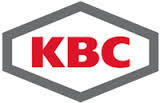
Such a standalone properties package obviously benefits from the integration with a large number of software packages that require thermophysical and transport properties. This is where CAPE-OPEN comes into play: the use of the standard interfaces allows customers to make use of the MultiFlash package in a plug and play manner across the chemical design and operation lifecycle. Models and data provided by MultiFlash can now be used in different commercial or in-house software packages without having to recode the interface between the package and e.g. the process simulator in which it is to be used. This development also simplifies life on Infochem’s side because the use of a single interface to reach a broad base of customers reduces the efforts to be spent in code development and support. The MultiFlash package is now in use in combination with the CAPE-OPEN interfaces at large chemical engineering companies such as BP or BASF.
Recent evolution of the CAPE-OPEN layer in MultiFlash can be followed in:
The Multiflash CAPE-OPEN COBIA Interface, at the CAPE-OPEN 2020 Annual Meeting.
Development of the Multiflash CAPE-OPEN Interface, at the CAPE-OPEN 2019 Annual Meeting.
Update on CAPE-OPEN in KBC, at the CAPE-OPEN 2017 Annual Meeting.
